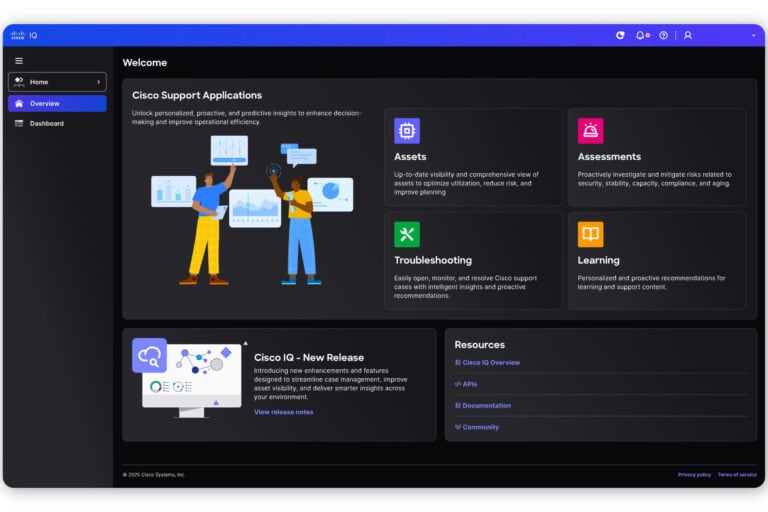CX, or Customer Experience, is receiving a lot of attention at Cisco. So much so that it has set up a special division within the company for this purpose. The goal of CX within Cisco is to enable partners and customers to get the most out of their Cisco investments. That all sounded and still sounds a bit vague. With the launch of Cisco IQ, this is changing. CX is getting a front door or a face, as it were. In this article, we will take a closer look at this new environment.
Put simply, Cisco IQ is the result of merging the three levels of Cisco Support and the two types of Cisco Professional Services. Of course, by 2025, there will be a solid layer of AI on top. Sandeep Milar, SVP CX Product Management, referred to it during a briefing we attended as a “fundamental change in how we support and serve our customers.” Key words in this regard are personalized, proactive, and predictive. This should give customers the feeling that they are seen. That they are, as it were, Cisco’s only customer, he states somewhat melodramatically.
What does Cisco IQ do?
As already indicated, Cisco IQ is an AI-powered interface for customers and partners. It is available in SaaS and multiple on-prem variants, including airgapped environments. According to Milar, this should make it available to all Cisco customers.
Cisco IQ aggregates information from a variety of sources. These include manuals for products and services or for troubleshooting, best practices, compliance checks, and all kinds of other documents. In fact, these are all things that suppliers such as Cisco send to customers. They can be part of a purchased product or service or as a follow-up to it. Cisco IQ should make it easier for customers to access the insights, alerts, and practical tips from this input. They don’t have to go through a huge pile of documentation first.
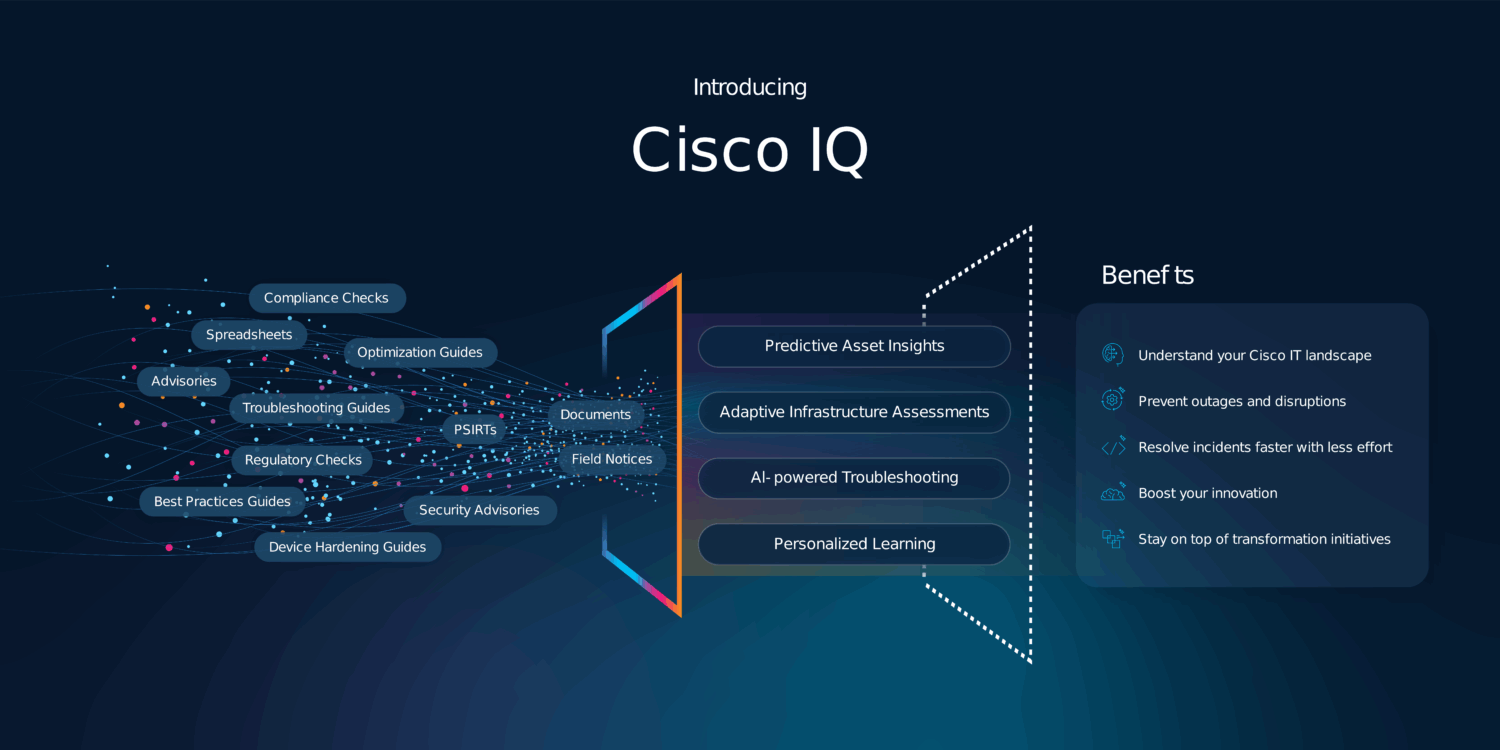
Example of Cisco IQ: proactive security assessment
As an example of how Cisco IQ can be used, Milar mentions a proactive security assessment. This is something that is now recommended by virtually every security supplier. The demo we saw specifically involved an assessment of the security hardening of IOS-XE equipment within an environment. It shows where any vulnerabilities lie and offers insights into how to remedy them. As far as we have seen, this remediation is not (yet) automated.
Especially in combination with the risk-based security approach that is so popular these days, you should always perform such an assessment first. If you have no idea what could happen and what assets you have, you cannot make a risk assessment.
The example involving IOS-XE is just one of the ways in which Cisco IQ can offer added value to partners and customers. Its functionality is gradually being extended to other parts of customer environments.
Below is a carousel with some screenshots of Cisco IQ:
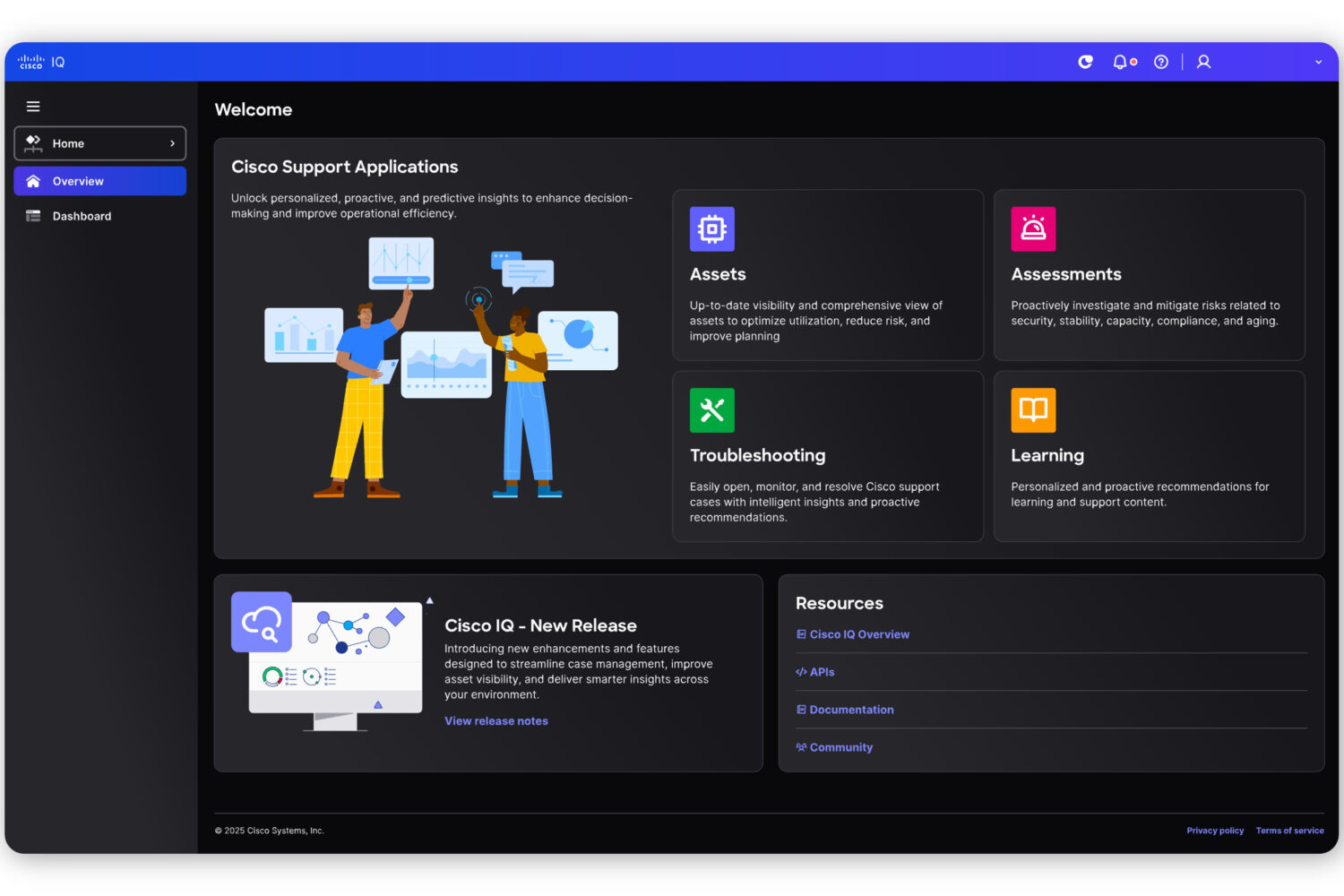
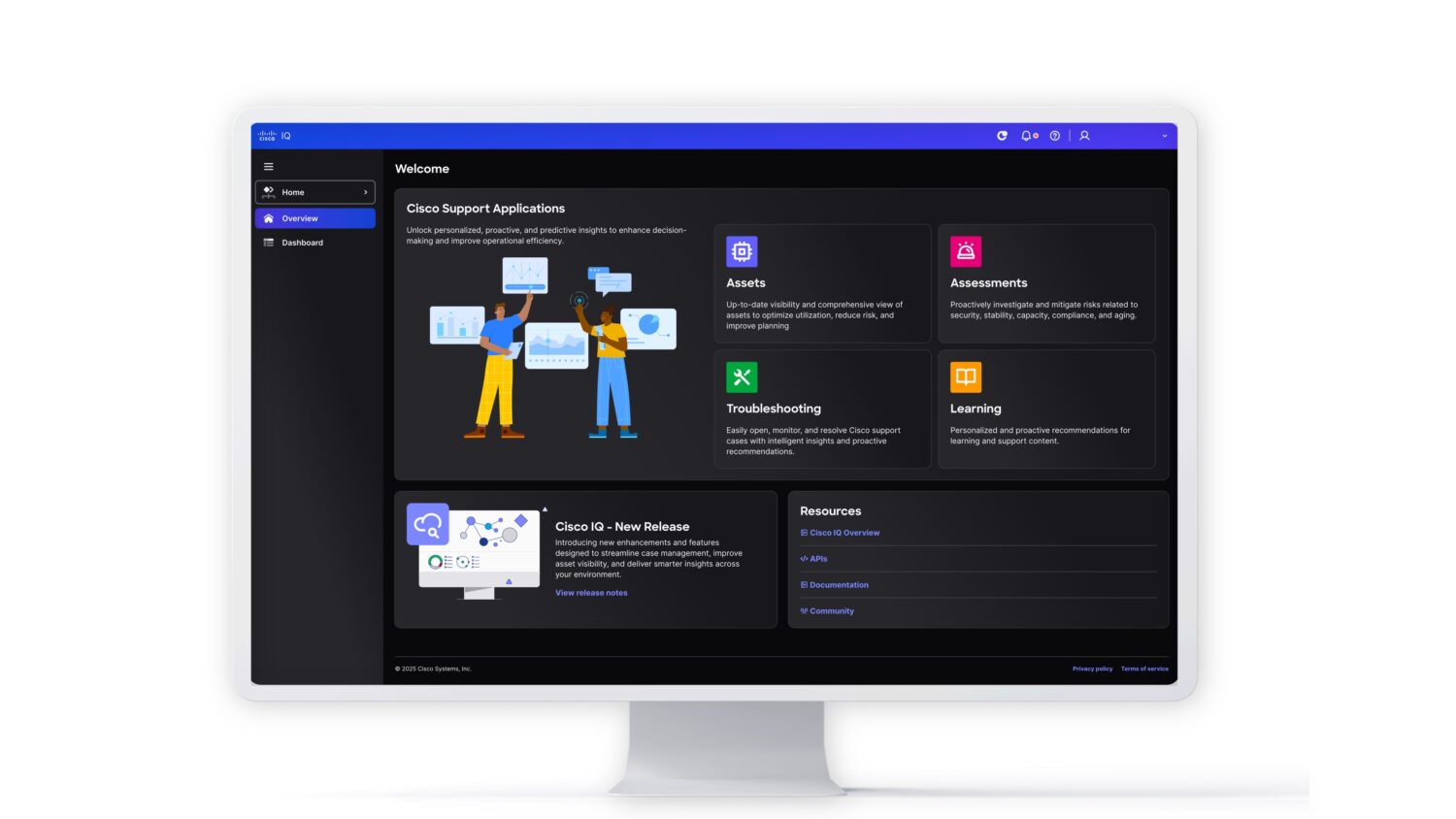


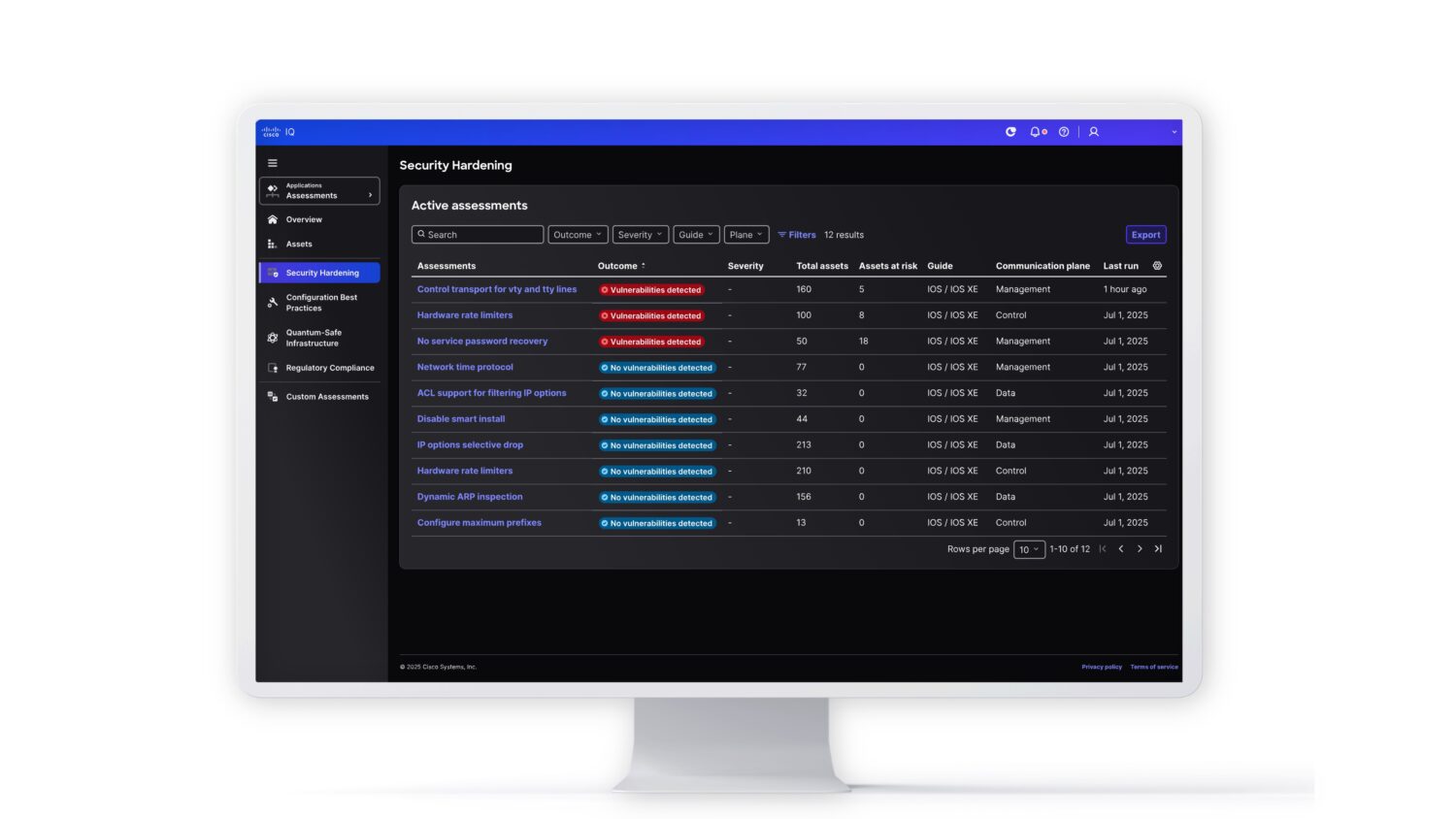

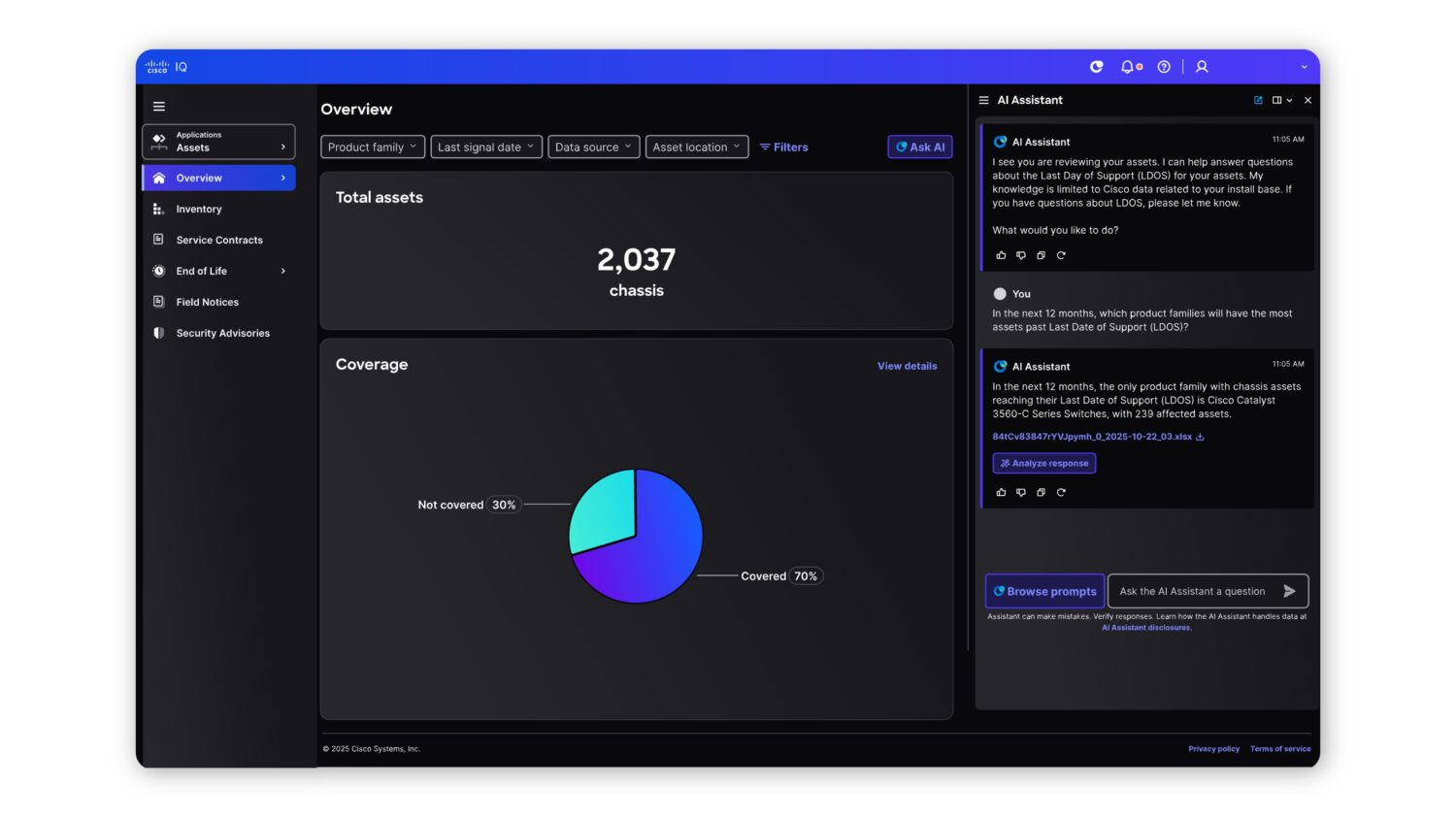


Are Cisco IQ and AI Canvas related?
To make Cisco IQ possible, a dose of AI is (obviously) required. Looking at the demo, we get the feeling that we have seen something similar before. It is very similar to how AI Canvas works. We do not mean that it does exactly the same thing. That is not the case. AI Canvas is a troubleshooting tool built on agentic AI principles. It takes quite a lot of initiative itself. Cisco IQ is much more about support and professional services (which of course also includes troubleshooting). Underneath, however, the two do seem to use the same agentic AI basis.
We would not be surprised if a large part of what Cisco has built for AI Canvas has also been used here. That would make sense, because many similar things need to be done. In both environments, the underlying agents need to retrieve information from system sources and devices. It would be strange if that were not standardized as much as possible. For example, we know that all the MCP servers it has set up for the various parts of the portfolio and platform are essentially identical.
Using the same basis for multiple components has one clear advantage. It makes it relatively easy to combine the capabilities of components in the future. All you have to do is modify the front end of a piece of software. That is much easier than integrating two fundamentally different architectures.
Read also: Cisco’s AI Canvas goes further where SaaS and AIOps fall short
Cisco IQ output must be accurate
Keep in mind that the success of Cisco IQ stands or falls with the quality of its output. Especially when Cisco partners start using it with their customers, they need to be confident that they are doing useful things that actually deliver value to their customers (who are paying for it). Since Cisco IQ relies heavily on AI’s understanding of language, it needs to be extremely well trained. At first glance, generic AI models seem to be excellent at summarizing large sources, but they can often miss the mark.
Cisco does not disclose which models it uses for Cisco IQ. Based on previous developments in this area at the company, where it has developed its own security and network models, we assume that Cisco IQ does not use a generic model, at least not exclusively.
CX is taking shape
We have already indicated that CX is a high priority for Cisco. It is no coincidence that one of the best people in the company, according to CEO Chuck Robbins, Liz Centoni, was put in charge of this division. Customers invest heavily in partners and therefore also in Cisco when they purchase new products and services. It is only logical that they want to get the most out of them. Cisco IQ now has to give concrete shape to this.
In part, Cisco IQ is mainly a cosmetic exercise. It does not necessarily add anything to the insights that partners and customers could already obtain. Checking whether IOS XE network products are optimally secured can just as easily be done in the management platform for that purpose. This applies to all components in Cisco IQ. However, that is far from ideal.
Apart from the insights it can offer partners and customers, we believe the biggest benefit of Cisco IQ is that everything is available centrally. So-called tool sprawl (having to use too many tools) is one of the biggest silent killers within organizations, but also for partners who have to serve these customers. If you can significantly reduce the number of tools you use, this will yield huge benefits. The time it takes to solve a problem is greatly reduced, but above all, it ensures that organizations as a whole are better organized. Potential security gaps are reduced because everything is closer together.
CX goes from esoteric to concrete
Many of the CX sessions we have attended at Cisco events in the past always seemed a bit soft to us. They often remained mere pipe dreams about what could be improved if customers could get the most out of their investments. With the arrival of Cisco IQ, CX is really coming into its own. We would not be surprised if this were to play a leading role in the agentic AI developments within Cisco.
Cisco IQ is expected to become generally available in the second half of Cisco’s fiscal year 2026, which runs until 31 July 2026.
